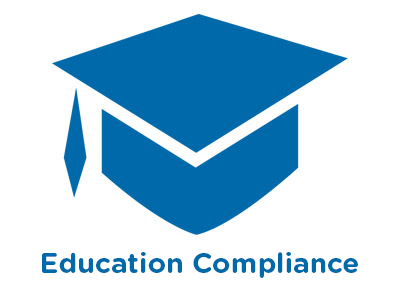 |
Exploring Four Areas of School-Age Development: Emotional Development |
0.50 |
One of the most helpful ways to gain an understanding of the needs and interests of youth between 5 and 12 is to examine their development from four different perspectives: 1) Physical Development, 2) Cognitive Development, 3) Social Development, and 4) Emotional Development. In this course, we will explore the emotional development perspective. |
 |
Exploring Four Areas of School-Age Development: Physical Development |
0.50 |
One of the most helpful ways to gain an understanding of the needs and interests of youth between 5 and 12 is to examine their development from four different perspectives: 1) Physical Development, 2) Cognitive Development, 3) Social Development, and 4) Emotional Development. In this course, we will explore the physical development perspective. |
 |
Exploring Four Areas of School-Age Development: Social Development |
0.50 |
One of the most helpful ways to gain an understanding of the needs and interests of youth between 5 and 12 is to examine their development from four different perspectives: 1) Physical Development, 2) Cognitive Development, 3) Social Development, and 4) Emotional Development. In this course, we will explore the social development perspective. |
 |
Exploring Individual Differences in School-Age Children: Implications for Programming |
2.00 |
One of the most significant challenges for staff in school-age programs is learning how to identify, manage, and respond appropriately to individual differences in a group setting. Some differences among children are the result of inborn characteristics and traits (e.g., physical characteristics, temperament, talents, race). Other differences are the result of external factors (e.g., the environment) or are cultivated as the child grows and develops (e.g., interests, skills, knowledge). The diverse needs, characteristics, interests, abilities, and skills of school-age children require a flexible atmosphere that supports diversity and choice for children with varying capacities for independent action. Staff who understand and appreciate individual differences in children are better equipped to plan and implement program experiences that help individual children grow and flourish in a group setting. |
 |
Exploring Taxonomy and Systematics |
1.00 |
In this course, you will learn about the history of taxonomy and the key contributors to its development, as well as taxonomy’s applications in animal management and conservation.
|
 |
Exploring the Continuum of Developmental Tasks of Children in Grades K-6 for Paraprofessionals |
1.00 |
Understanding the continuum of ongoing development during the school age years provides the foundation for planning and implementing successful strategies and ideas as a paraprofessional. When staff know and understand the developmental tasks of students in Kindergarten through 6th grade, they can work with colleagues to design effective environments, plan engaging activities, set appropriate expectations and limits, and guide children’s behavior effectively. Training all staff members on the foundations of child development, no matter their role in the school, is a vital part of student success. |
 |
Exploring the Continuum of Developmental Tasks of School-Age Children from 5 to 12 |
2.00 |
Understanding the continuum of ongoing development between the ages of 5 and 12 provides the foundation for planning and implementing successful school-age programs. When staff know and understand the developmental tasks of school-age children, they can work with children and colleagues to design effective environments, plan engaging activities, set appropriate expectations and limits, and guide children’s behavior effectively. |
 |
Export Control in Higher Education |
1.00 |
Colleges and universities are at the cutting edge of research in strategic technologies, microsystems engineering, astrophysics and imaging, and computing and information systems, among other fields. Our government controls the export of sensitive equipment, software, and technology as a way to protect our national security interests, and promote our foreign policy objectives. Export control describes the regulatory system in place to do so. |
 |
Exterior Fire Operations #1433 (Instructor Guide) |
1.00 |
This is the Instructor Guide for Lesson #1433 Exterior Fire Operations. This Instructor Guide is intended to prepare a lead instructor to deliver this course curriculum. Included in this guide is a review of lesson content and all required lesson materials. The lead instructor must pass this instructor guide course with a minimum score of 80% to receive the course materials for this lesson. |
 |
Falls in Construction |
1.50 |
This course is in English. We also have a version of this course in Spanish. In this course, you will watch videos on various types of falls that can occur while working in construction. You will learn about floor openings, fixed scaffolds, bridge decking, reroofing, skylights, and leading-edge work. |











